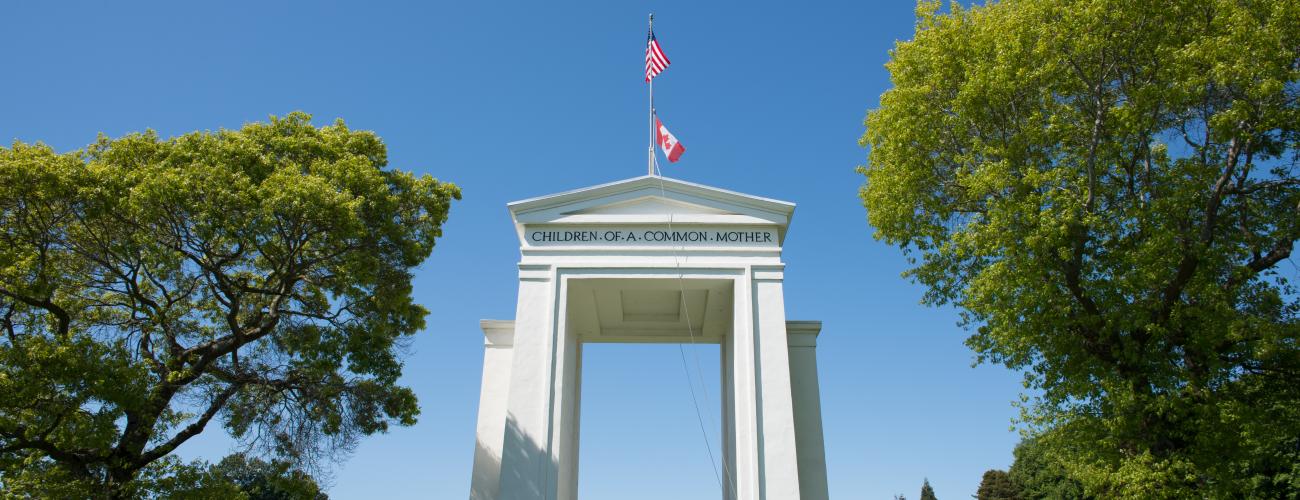Peace Arch Historical State Park History
“May These Gates Never Be Closed”
The inscription inside the east wall of the Peace Arch monument has a simple message: the highest goal between great nations should be perfect peace. This 67-foot-tall structure of concrete on a steel frame was financed and constructed under the direction of lawyer, financier, road builder and humanitarian Sam Hill. He built it at the place where the border between the United States and Canada touches saltwater in the traditional territories of Coast Salish Indigenous people whose descendants include members of the Lummi Nation, Nooksack Indian Tribe and Semiahmoo First Nation. Thousands of onlookers attended the dedication of the world’s first shrine to peace on September 6, 1921.
Pennies and Nickels for Formal Gardens
In 1930, Superintendent of Public Instruction Noah D. Showalter approved a plan for a fund-raising effort among Washington’s schoolchildren. Students donated about $1,200 in pennies and nickels to beautify the area around the arch “in order to give it an impressive setting.” In March 1931, Washington State Governor Roland H. Hartley approved a bill providing $15,000 for the purchase and improvement of land around the Peace Arch for a State Park named in honor of Sam Hill, who had passed away the previous month. In July 1931, the arch and the field around it were donated to the Washington State Parks Committee by the City of Blaine. Additional property east of the arch was purchased for $4,000 and arrangements were made to begin landscaping the park. To provide help to families struggling through the Great Depression, thirty men were hired to work on the park for two days each so the work could also provide relief to as many unemployed workers as possible. With thrifty management, the funds lasted until the following spring, and the money contributed by the children paid for the final work, including a rose garden.
The landscaping lives on in the formal gardens, unique in Washington’s state parks with over 10,000 annuals planted and carefully tended each year by the park staff. Maturing rhododendrons have grown into a storybook “forest” that displays a wild splash of brilliance in the spring.
A Meeting Place
Today’s Peace Arch Historical State Park honors the agreements that established the peaceful coexistence between the US and Britain (and later Canada after confederation of the former British colonies). The 1814 Treaty of Ghent ended hostilities between the US and Britain and initiated a process for the resolution of ongoing border issues. Subsequently, the Webster-Ashburton Treaty (1842) and Oregon Treaty (1846) finalized the placement, survey and feel of the “longest undefended border.” In keeping with the treaties’ mandates of shared use of border features, the state park and adjoining Peace Arch Provincial Park in British Columbia have become a unique place for residents and visitors of both countries to meet, celebrate and make their voices heard together without passing through a port of entry. In the 1950s, human rights leader and celebrated singer Paul Robeson performed at the Arch on several occasions to support workers’ rights. During the Covid-19 pandemic in 2020-2021, thousands of loved ones divided by the closure of the US/Canada border to nonessential travel found a haven to spend time together at the park. The Peace Arch has become a focal point for the celebration and defense of the ideals of democracy and peace between nations.
Sam Hill would be pleased.
Sharing the histories of Washington’s state parks is an ongoing project. Learn more here.

